BIG IDEAS
What is Earth?
BIG IDEAS
What is Earth?

Earth is the dynamic planet that we call home. It formed over 4.5 billion years ago, and it has been changing ever since. Sometimes these changes happen very fast, like an earthquake or a volcanic eruption. But most changes happen so slowly we don't notice them at all!
What are the big ideas about Earth?
1. Our Earth is always changing
Earth formed over 4.5 billion years ago, and it has been changing ever since. Sometimes these changes happen very fast. An earthquake can split the ground in a few seconds. Lava from a volcanic eruption can spread over the side of a volcano in minutes. A heavy rainstorm can flood a neighborhood in a day. These changes are easy to see.
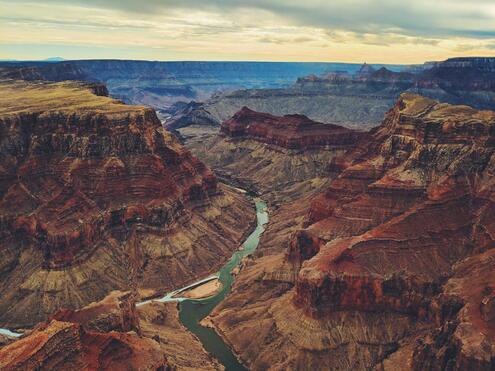
The Grand Canyon started to form about 6 million years ago.
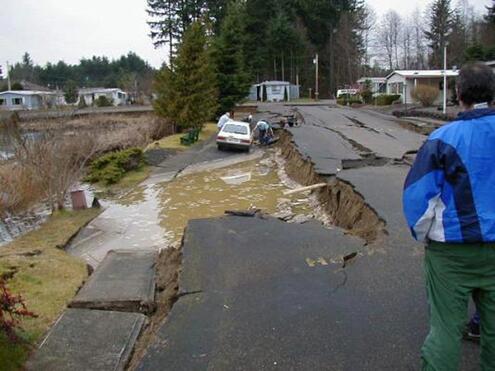
Earthquakes change the landscape suddenly, but are caused by pressure built up over a long time.
But most changes happen so slowly we don’t notice them at all. The continents slowly creep across the surface of Earth at an average speed of eight centimeters a year. Over hundreds of millions of years, mountains form, and then slowly erode away.
How do Earth scientists know about these changes? They do a lot of detective work, and they look for clues all over Earth!
2. Earth is made of different layers
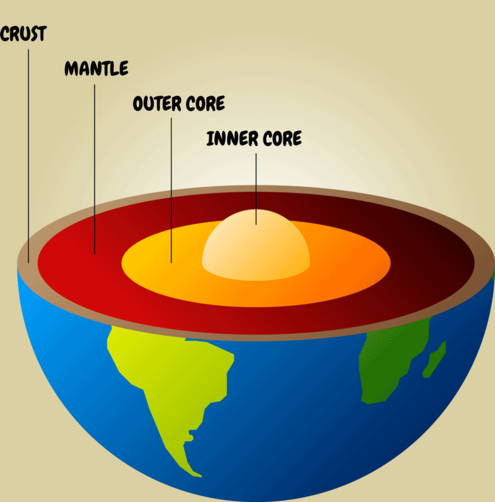
Earth’s layers
A peek inside our planet
We live on Earth's crust, a layer of rock about 30 kilometers (22 miles) thick. That might seem thick, but it's actually very thin, considering the size of Earth. Earth's crust and some of the layer below, the mantle, is broken up into large pieces called tectonic plates.
The mantle is a thick layer of rock just under the crust. It's firm and hard like other rock, but it's actually flowing very slowly, about as slowly as your fingernails grow.
The outer core is a liquid layer, made mostly of iron and nickel, that moves around the inner core. This motion causes Earth to act like a giant magnet.
The inner core is a solid ball made almost entirely of two metals, iron and nickel. It's hotter here than on the surface of the Sun!
3. Earth’s layers work together
Under your feet, Earth's different layers are moving and interacting all the time. All the layers work together in a system, and each one plays an important role.
Here's just one way they all work together:
- Intense heat flowing out of the core and in the mantle makes the mantle flow in circles.
- The motion of the mantle causes the plates to move.
- The moving plates create volcanoes.
- The volcanoes release gases into the atmosphere.
- The atmosphere acts like a giant blanket, keeping the planet warm.
This makes life on Earth possible!
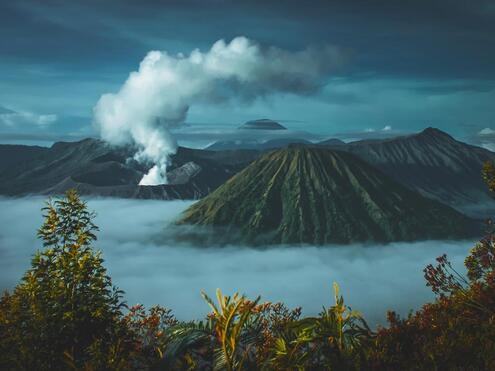
Movement of the plates causes volcanoes and earthquakes and forms mountains and continents.
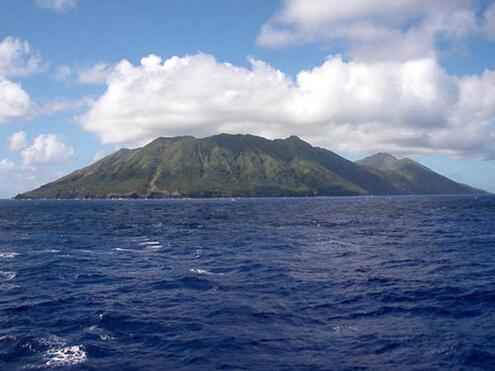
Early in Earth’s history, water vapor from volcanoes helped form our oceans.
4. Humans are just a tiny part of Earth’s long history!
Our planet Earth formed 4.6 billion years ago. That's a really, really long time ago! The earliest humans didn’t appear until 1.8 million years ago. It might seem like a long time, but that's just a small part of Earth's past.
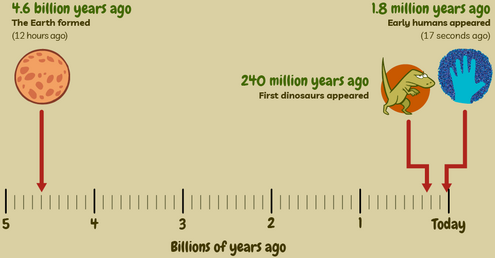

It's hard to picture Earth's long history. Here's one way to do it. Imagine the entire history of Earth squeezed into just 12 hours, from noon to midnight. When we think of time in this way, humans have only been around 17 seconds! But it’s been a busy few seconds. In our brief time here, we’ve had a huge impact on Earth!
5. Rocks tell stories about Earth
Rocks hold important clues about our planet. They reveal information about remote places we can't go to and about distant times in the past.
Scientists might not be able to travel inside an erupting volcano , to the bottom of the ocean , or across the solar system . But they can learn about the conditions in these places from rocks they collect.
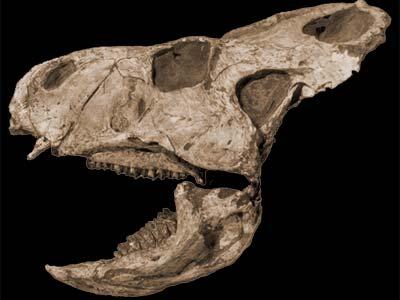
This is a fossil of Protoceratops, an animal that lived about 80 million years ago.
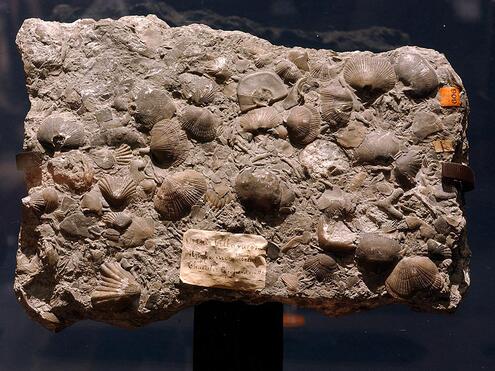
This marine fossil-rich rock was found in Ohio.
Rocks also give scientists a look back in time. We know about life long ago from the fossils found in sedimentary rocks. Fossils tell us when, where, and how ancient plants and animals once lived on Earth.
Rocks can also tell us about the history of Earth itself. They hold clues to how Earth formed and how it has changed over billions of years.
6. All rocks are made of minerals
Whether it's a rock in your backyard or in a canyon wall, almost every rock you've ever seen is made of minerals.
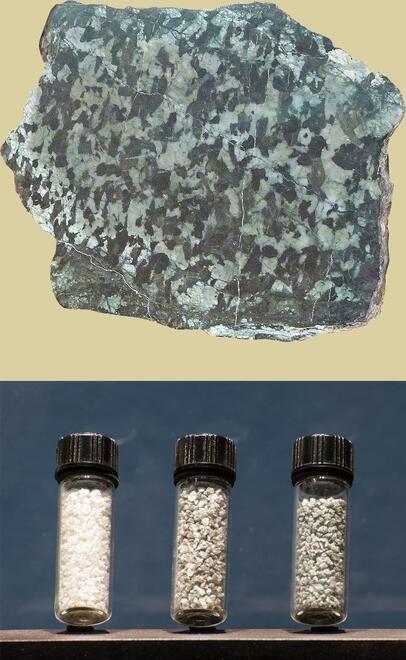
Top: This is a rock called gabbro. It’s made of the minerals plagioclase, clinopyroxene, and orthopyroxene.
Bottom: A piece of gabbro was crushed. Its three main minerals were separated.
Rocks are different from each other because they have different types and amounts of minerals in them. One way scientists identify rocks is by looking closely at their minerals. For example, the rock sandstone is made of the mineral quartz. The rock granite contains quartz too, but it also has other minerals like mica and feldspar.
The kinds of minerals in a rock give clues to where the rocks formed. A rock with the mineral garnet probably formed deep in Earth, like under a mountain. A rock with the mineral muscovite probably formed on land.
7. There are three types of rock
Rocks come in all sizes, shapes, colors, and textures.
Despite their differences, there are three basic types of rocks:
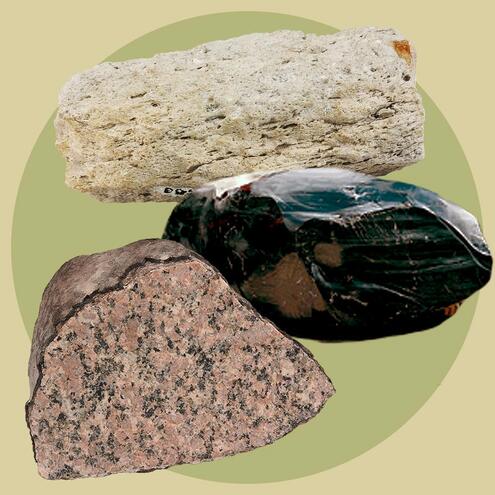
Igneous rocks include: (top to bottom) pumice, obsidian, and granite.
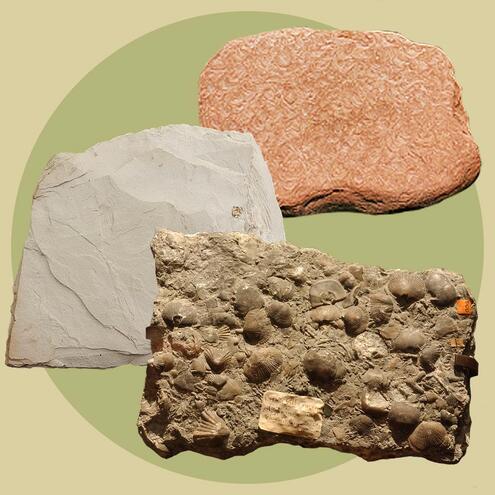
Sedimentary rocks include: (top to bottom) sandstone, chalk, and limestone.
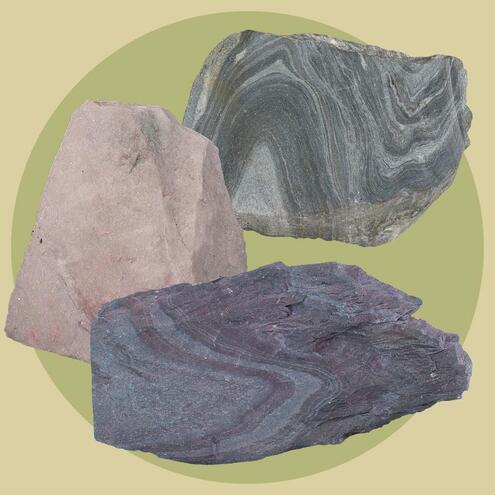
Metamorphic rocks include: (top to bottom) gneiss, marble, and slate.
Igneous (IG-nee-us) rocks form from melted rock, or magma, that comes from inside Earth. Sometimes the magma erupts from a volcano, and then cools and hardens at Earth's surface. Magma can also cool slowly and form rocks underground. Igneous rocks are brand-new rocks. They don't form from other rocks.
Sedimentary (sed-uh-MEN-tuh-ree) rocks form from tiny pieces of rock that are broken down by wind and water. Over time, these pieces settle in layers with sand, silt, dead plants, and animal skeletons. These sediments are squeezed by other sediments above them until they cement together to form a rock.
Metamorphic (meh-tuh-MOR-fik) rocks form from igneous, sedimentary, and even other metamorphic rocks deep in Earth's crust. When these rocks are heated and squeezed, they slowly change into new, metamorphic rocks.
8. Scientists discover things about our planet all the time
Scientists are always exploring new mysteries. Sometimes they do fieldwork, traveling to places like volcanoes or earthquake sites. Other times they do experiments in labs, recreating conditions deep inside Earth where we can't go.
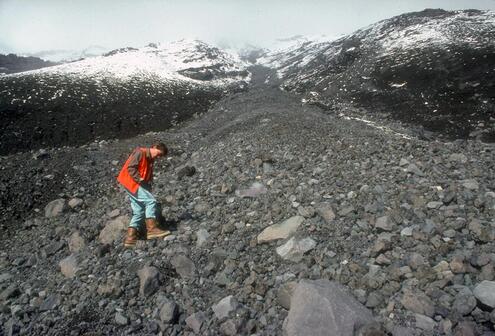
A scientist might gather rocks at a volcano to find out why it erupted.
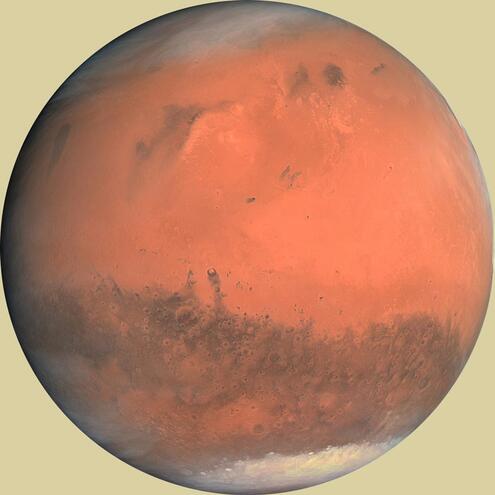
What kinds of things do you think we could learn from other planets?
In the 1960s, scientists discovered evidence that Earth's crust and uppermost mantle are broken into pieces that are always moving. They called these pieces plates.
In the late 1970s, scientists found hot-water vents at the bottom of the ocean where plates are moving apart.
In 2004, scientists discovered that there once was liquid water on Mars . Other planets could hold important clues to the history, or future, of our own planet, Earth.
We have learned a lot about our Earth , but there is much more to learn. What will scientists discover tomorrow? Will that scientist be YOU?





 Biodiversity
Biodiversity
 Brain
Brain
 Genetics
Genetics
 Marine BiOLogy
Marine BiOLogy
 MicrobiOLogy
MicrobiOLogy
 PaleontOLogy
PaleontOLogy
 ZoOLogy
ZoOLogy
 AnthropOLogy
AnthropOLogy
 ArchaeOLogy
ArchaeOLogy
 Astronomy
Astronomy
 Climate Change
Climate Change
 Earth
Earth
 Physics
Physics
 Water
Water
